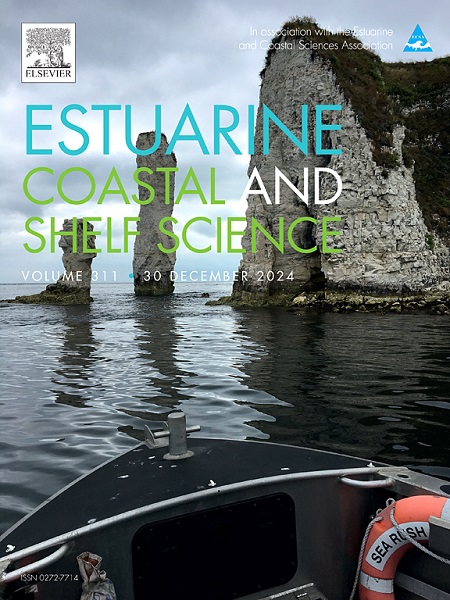Influence of seasonality on the toxicity and metals bioavailability after the resuspension of sediments from a tropical estuary
IF 2.6
3区 地球科学
Q1 MARINE & FRESHWATER BIOLOGY
引用次数: 0
Abstract
The resuspension of polluted sediments often transfers contaminants to the water column, but the potential alterations in deposited bottom sediments remain overlooked. Guanabara Bay (GB) is a tropical estuary highly polluted by multiple sources and contaminants. This study aimed to assess possible changes of toxicity and metal pollutant retention capacity of GB sediments after resuspension, at 1h and 24h after resuspension. Sediments were collected from the Niterói Harbor (NH), Meriti River (MR), Iguaçu River (IR), Rio de Janeiro Harbor (RJH), and Guapimirim Protection Area (Guapi) in winter and summer. Whole sediment toxicity on the fecundity of Nitokra sp. was lower in the Guapi, while IR and RJH were the most toxic. Effects on the sediment-water interface were assessed by embryo-larval development of Echinometra lucunter, with higher toxicity occurring in samples from MR and RJH after resuspension, showing that resuspension increases toxicity. Resuspension increased toxicity in the sediment and water, demonstrating the paramount importance of performing ecotoxicological characterization in different periods. Furthermore, proper management of dredged materials will benefit from predictions of toxicity changes related to seasonal variability.

求助全文
约1分钟内获得全文
求助全文
来源期刊
CiteScore
5.60
自引率
7.10%
发文量
374
审稿时长
9 months
期刊介绍:
Estuarine, Coastal and Shelf Science is an international multidisciplinary journal devoted to the analysis of saline water phenomena ranging from the outer edge of the continental shelf to the upper limits of the tidal zone. The journal provides a unique forum, unifying the multidisciplinary approaches to the study of the oceanography of estuaries, coastal zones, and continental shelf seas. It features original research papers, review papers and short communications treating such disciplines as zoology, botany, geology, sedimentology, physical oceanography.

 求助内容:
求助内容: 应助结果提醒方式:
应助结果提醒方式:


